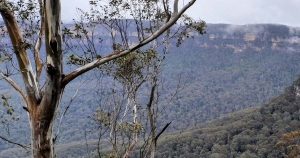By Greta Wickham
The garden has been a great Covid19 distraction to my husband and me during Covid 19. This time last year we were preparing our garden to be one of eight gardens taking part in the Open Gardens Weekend organized by the garden club, to raise much-needed funds for various charities chosen by the eight garden owners.
The Open Garden weekend has been cancelled for 2020, so this year we have taken the opportunity to drastically reduce the two very large hedges of sasanqua camellia and marraya, something we would not have contemplated if we were to open our garden this year. We have been waiting for the end of winter, not just for the warmer weather, but so we can get stuck into the height of our hedges.
There is not a single best time for pruning. Late winter is an ideal time for pruning many trees and shrubs because they are dormant and it is easier to see what needs to be pruned. Late-winter pruning promotes fast regrowth in spring. Some trees, such as maples, birches, and magnolias bleed sap heavily if pruned in late winter. This causes little harm but can be avoided by pruning these trees after they are fully leafed out in late spring or early summer. Summer is the best time to remove dead branches when they stand out.
Prune spring-flowering trees and shrubs right after they finish flowering in spring. Trees and shrubs that bloom during summer and into autumn are best pruned in later winter or early spring as soon as their annual growth begins. Refrain from autumn pruning because it stimulates new growth that could be killed by winter cold. Prune anytime suckers, water sprouts, branches that are dead, diseased or damaged. Prune most deciduous fruit trees, roses, grape vines and ornamentals in winter.
After pruning, you may apply a fertilizer to encourage vigorous new growth. Your plants will likely be blooming when you cut them back and will certainly not look their best immediately after the procedure. In many instances though, it is well worth the down time.
In the marraya hedge, we have experienced two or three plants defoliating. To combat this we treated the foliage with a spray of Yates anti rot. It is a systemic fungicide – absorbed by the foliage and travels down to the roots this boosts the plant’s defence mechanisms to help prevent disease. The hedging has been completed and we are looking forward to the new growth.
Our attention is now drawn to the lawn. This is the critical time of year to give your lawn a balanced slow release feed. Fertilising now provides the nutrients to reinvigorate the lawn so it can power into summer. If you only fertilise once a year, do it in Spring if you fertilise twice a year, do it in Spring and Autumn It can be a tricky time of year for watering. The soil has not warmed and nights may still be cool, so a deep watering may last for longer than expected. Burrow you finger down into the lawn. If it is damp, do not water. Make the most of any rain or water you do apply by using a soil wetter; it will improve water penetration significantly. The weeds are coming to life too. Fertilising the lawn to thicken it up will help keep weeds at bay. Very sparse areas are the most likely to become infested with weeds. Use a weed killer suitable for your lawn type.
As our normal monthly meeting have been postponed, the club members have organized two garden ramble with Covid Safeguarding to catch-up with each other. Club meetings are held on the 2nd Wednesday of the month, in the Galston Community Hall, 37 Arcadia Rd, Galston at 7.00pm, new members are warmly welcomed. If you would like further information please email galstongardenclub@gmail.com or visit our website www.galstongardenclub.com.au







